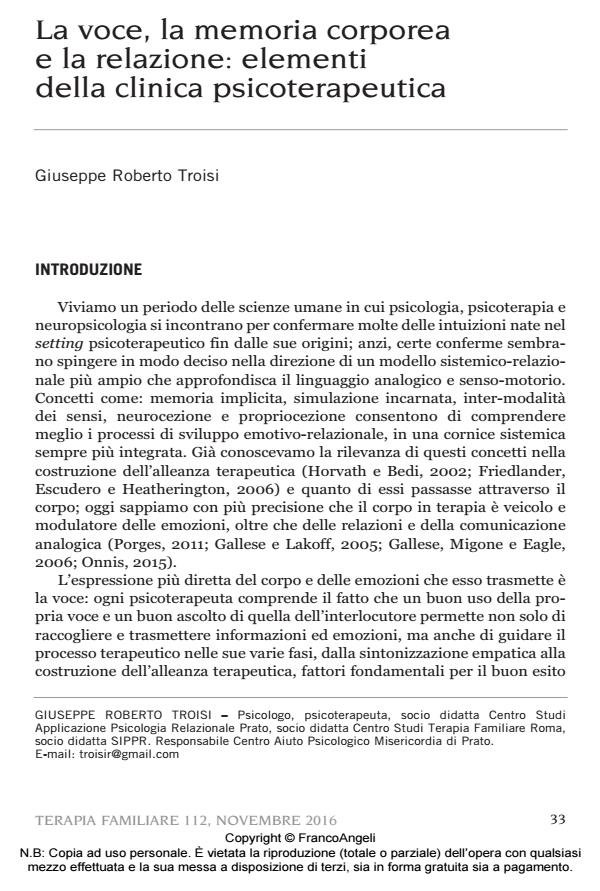La voce, la memoria corporea e la relazione: elementi della clinica psicoterapeutica
Journal title TERAPIA FAMILIARE
Author/s Giuseppe Roberto Troisi
Publishing Year 2016 Issue 2016/112
Language Italian Pages 23 P. 33-55 File size 133 KB
DOI 10.3280/TF2016-112003
DOI is like a bar code for intellectual property: to have more infomation
click here
Below, you can see the article first page
If you want to buy this article in PDF format, you can do it, following the instructions to buy download credits

FrancoAngeli is member of Publishers International Linking Association, Inc (PILA), a not-for-profit association which run the CrossRef service enabling links to and from online scholarly content.
In this article we intend to demonstrate the importance of a good use of the voice in the development of therapeutical alliance. The Voice allows to handle not only informations and emotions, but also to guide the therapeutical process during its various phases, starting with the empathic attunement. During its development the embryo is exposed to vibrations, emotional status and sounds. The author asks himself how much this transmission influences the neuro-social development of the baby and his adaptation to the family environment and analyses in particular those situation with a disorganised attachment. The recent discoveries in the neurosciences point out the connection between the Autonomic Nervous System and relational environment and how this connections passes through the sounds and faces of relatives. After showing Porge’s Polyvagal Theory and the researches on the mirror neurones of the Parma Group, the author presents the hypothesis that the voices of familiar conflicts are among the specific factors in the Personality Disorders and proposes a few example stories of people with Borderline Personality Disorder. In those examples body and voice allow us to comprehend the traumas developed within the families and the parental couples and drives aimed intervention hypothesis.
Keywords: Voice, body, therapeutical alliance, polyvagal theory, mirror neuron, borderline
Giuseppe Roberto Troisi, La voce, la memoria corporea e la relazione: elementi della clinica psicoterapeutica in "TERAPIA FAMILIARE" 112/2016, pp 33-55, DOI: 10.3280/TF2016-112003